All about textile panels
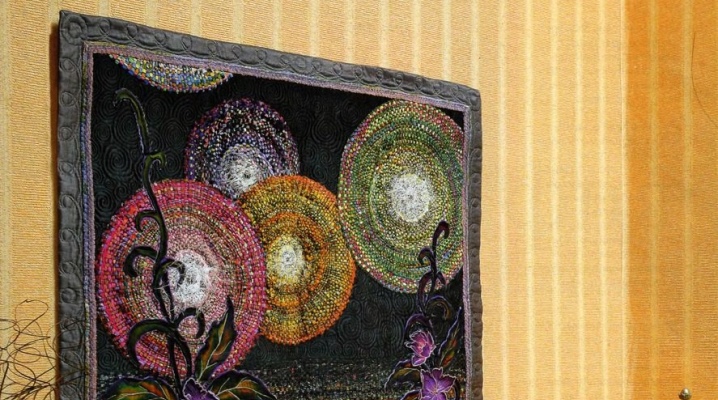
Textile panels are very popular. They are distinguished by their spectacular appearance that can beautify the interior. In today's article, we will take a closer look at similar products.
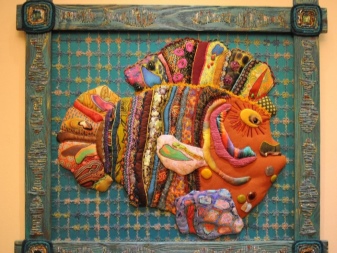
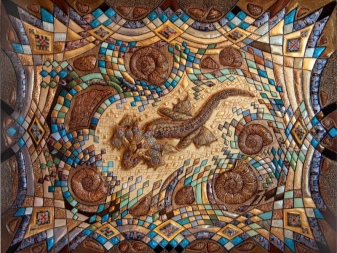
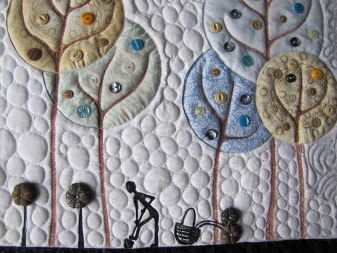
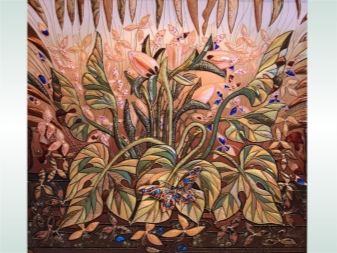
Advantages and disadvantages
Nowadays, beautiful panels made of fabric or woven patches can be found in many homes.
These products are most often hung on the wall, where they rarely go unnoticed by others.

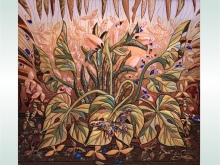
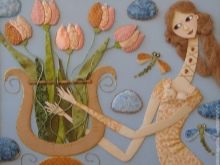
The demand for such a decor is not surprising, because it has a lot of positive qualities.
- The main advantage of a textile panel is its beauty. Correctly made products with many small and complex details literally mesmerize with their design. It is difficult to pass by such a thing without paying attention to it.
- Due to such an element, it is possible to effectively decorate the interior and even complement it with bright woven accents. If you want to dilute a boring or too simple environment, a textile panel will be a winning solution.
- Such decorations can not only be purchased ready-made, but also made by hand. Of course, the creative process is often difficult and time-consuming, but the result is worth it.
- The fabric panel is environmentally friendly. The presence of such a decor in the house will not harm the health of the residents in any way. In the manufacture of these products, you can use a variety of types of fabrics, among which there are quite natural ones.
- Fabric panels can be made or selected for an interior designed in any style. Craftsmen can make universal products with their own hands that will seamlessly fit into all possible interior ensembles.
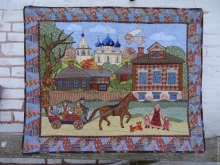
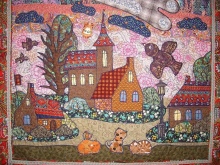
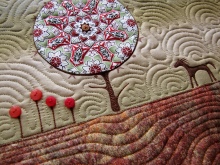
Woven decorative fabric will easily become a chic addition to the interior ensemble, but you will have to carefully monitor its cleanliness. Many people attribute this to a serious disadvantage of such things. This is especially true for light compositions located in vulnerable places (for example, in the corridor or hallway).
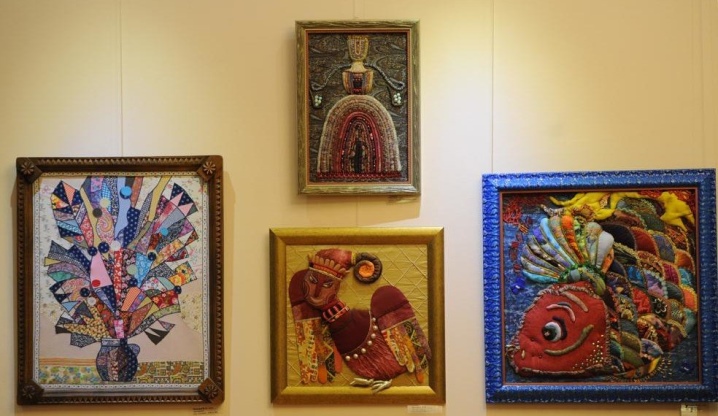
Species overview
Textile panels are different. Each of the subspecies has its own characteristics and distinctive characteristics. They are also made in different ways. Let's look at these issues in more detail.
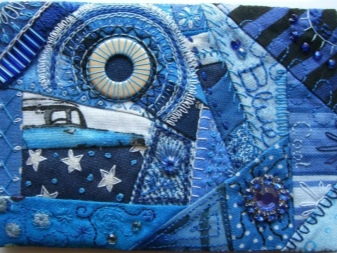

Volumetric
A complex volumetric panel made of textiles will look elegant and attractive in the interior. It is advisable to choose a place for it where it will be clearly visible, and the drawing will be visible in its entire size.
Cutting off such things is not recommended. Volumetric panels most often imply the presence of certain 3D pictures on the base.
It can be leaves, flowers, trees - there are a lot of options. In implementation, these types of products turn out to be quite complex and capricious. Simply put, three-dimensional textile panels are made in a combination of several techniques at once.


Application
Panels of this type are recognized as one of the most popular and easy to make. They are made elementary: I sew on pre-prepared parts on a suitable base. Thus, a certain drawing is formed, which was conceived by the author. Despite the fact that in the implementation of panel applications, they turn out to be as simple and understandable as possible, this does not mean that they look worse or simpler than other options. A carefully crafted decoration will look spectacular and elegant. The main thing is that the master thinks over the future creative composition thoroughly.
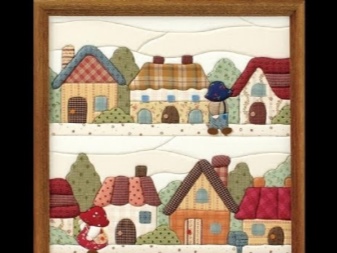

Patchwork
This is the name of the complex technique of making woven panels. An inexperienced needlewoman is unlikely to cope with it - it is necessary to have at least minimal knowledge and skills in this area. First, you have to make the picture itself, and then properly pull it on the selected base. The blanks are either drawn or printed on paper sheets (preferably in 2 copies).
Next, the blanks are cut into small parts, according to the template they are sewn together.
In all cases, the master must leave a small margin for the subsequent stretching of the material onto the base.

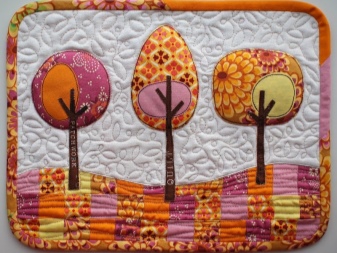
Selection of material
To make a beautiful and practical panel, you can use many different materials. Each master himself chooses the best option, with which it will be most convenient for him to work. Let's consider what materials are the most popular and demanded.
- Denim. Made of durable and practical denim, panels always look special. They often display mesmerizing, mysterious stories that always attract a lot of attention. Working with denim is not too difficult, and in operation it usually turns out to be practical and durable, therefore, crafts from it are appropriate.


- Cotton. You can make chic panels from cotton with a lot of small details. For example, it can be bright Indian motives, where a large number of saturated colors are usually present.
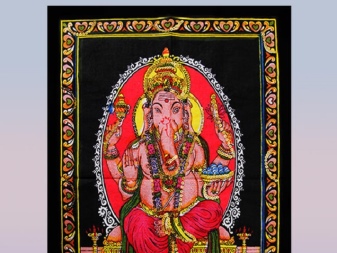

- From pieces of textiles. Many craftsmen prefer to make beautiful decorative work from leftovers or specially cut pieces of fabric. As a result, beautiful panels are obtained, depicting a variety of figures, motives and compositions.
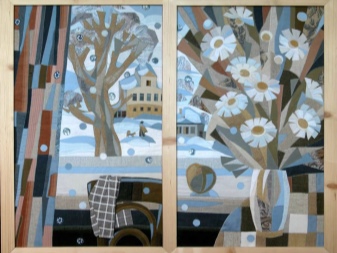

Modern needlewomen have the ability to select any material that they think is optimal for making panels.
The main thing is that it is easy to work with it, otherwise it may take too much extra time to create a beautiful decoration.
Possible topics
Woven panels are also good because they can be realized in a variety of themes. It is this fact that attracts many consumers and craftsmen who make such decorations. Let's consider in detail which topics are the most popular and interesting. It is necessary to take into account the fact that the theme of the textile panel must necessarily correspond to the style and appearance of the interior in which it will be located.
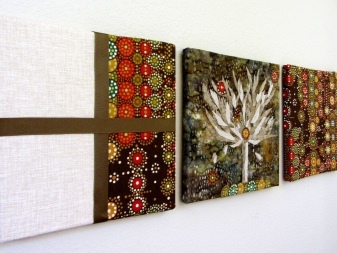
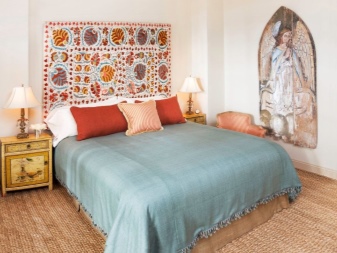
So, in rooms designed in country, classic or Provence styles, all sorts of neat still lifes, solid landscapes or floral arrangements will look harmonious. The main condition must be met - the pictures should look as simple and uncomplicated as possible, but at the same time cheerful and positive. In this case, the woven panel will delight the household and complement the interior. The abstraction, which is popular today, will also fit into such interior ensembles. It can be considered a universal solution.
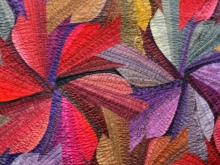
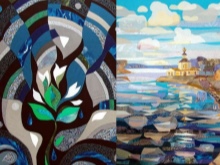

Scandinavian interiors are less common in our country. Often you can find bright and futuristic paintings in them, which depict bows, various letters, lines, geometric shapes and other similar details.
Often, such specimens are made with the addition of beads, shells or the remains of ribbons of different colors.
Very popular in our time "attic" loft style, which is found in many homes. In such an ensemble, you can add textile panels of various themes, but they should not contain more than 2 colors. Products must demonstrate rigor and conciseness. Such decorations will not look boring - you should not worry.
A separate category is textile panels for decorating children's rooms. Small households are unlikely to want to admire abstraction or perfectly straight letters.It is best for children to make or buy decorations that depict various animals, flowers, birds, nature or cartoon characters.
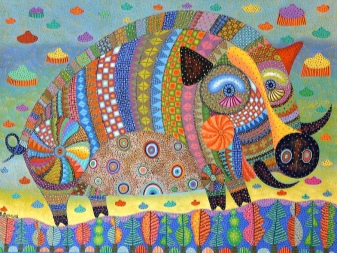

Do not forget that absolutely all the rules have their exceptions, so you need to approach the issue of choosing a panel theme for decorating your home individually. The woven applique may not correspond to the main direction of the interior, but at the same time be so filigree that it will fit seamlessly into the presented conditions and will not introduce disharmony into them.
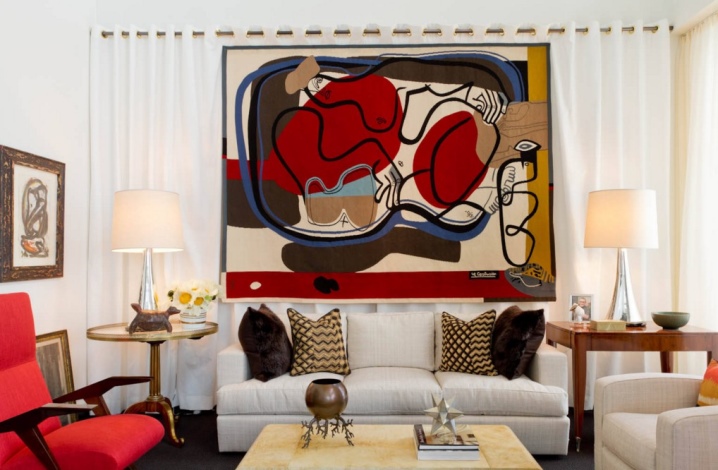
How to do it yourself?
You can make a decorative woven panel with your own hands. If you strictly follow the instructions and do not neglect any of the listed steps, you can achieve very good results and end up with a chic accessory for your home.
First of all, the master needs to prepare a high-quality and reliable foundation.
Sometimes craftsmen make panels on foam plastic, thick cardboard or an old frame.
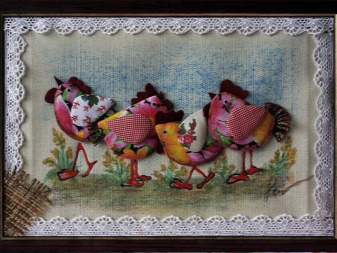
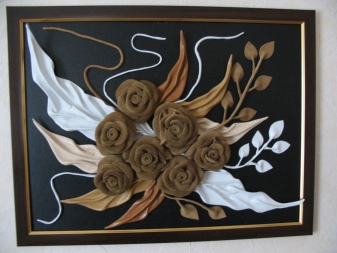
We will analyze step by step how to correctly and accurately make textile panels with our own hands in several ways.
- Pull the fabric over the prepared base fabric. The next step is to carefully wrap it on the back and fix it as securely as possible using glue. After that, it will only be necessary to fix the resulting "base" on the frame.
- Make a frame using wooden slats. Then carefully trim the selected textiles, taking into account the allowance. Stretch the woven fabric you are using over a piece of wood. Try to fix the fabric on the back side as securely and firmly as possible. It is recommended to use a stapler or nails for this.
- To make a beautiful and neat panel, it is not necessary to use a wooden frame and spend time making it. Instead, a plywood sheet will do. Gently attach foam rubber or synthetic winterizer to the front part - as it is more convenient for you, the difference is not fundamental. Cover the resulting base with the prepared woven fabric and fix it on the back.
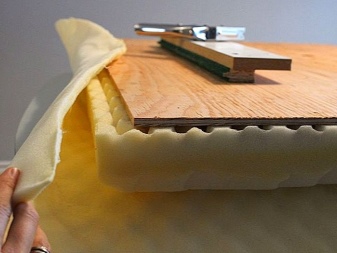
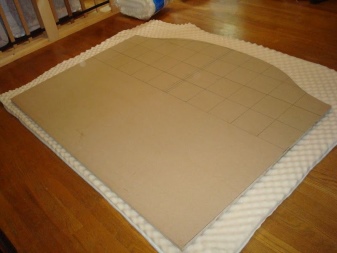
Further, in order to decorate the resulting canvas well, you can use materials of various types.
This is not only about textiles - many craftsmen choose beads, sequins, beads and even buttons to decorate their canvases.
If desired, it will be possible to depict lush and colorful flowers from woven patches. Let's take a closer look at how to make a panel in accordance with the applique technique.
- First, the base is prepared. You can take plywood. You need to pull the fabric over it - this is the future background. To achieve bulk, you can put foam rubber or synthetic winterizer under it, as described above. The fabric is fixed either with glue or with a stapler.
- Prepare all the necessary details for future images in advance. It can be flowers, figures of men, houses or trees - it all depends on the subject of the product.
- Then all the details should be sewn to the prepared base. Some craftsmen prefer to do it by hand, while others - using a sewing machine. Alternatively, it is allowed to use double-sided adhesive tape and attach all the components to it, ironing afterwards with an iron.
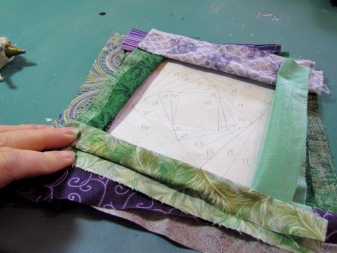
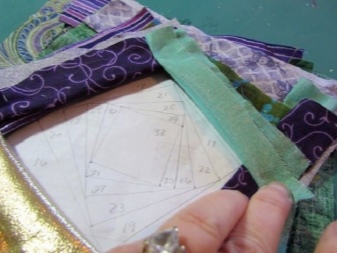
Useful Tips
Let's take a look at some helpful tips.
- To make certain parts of the figures on the panel more voluminous, it is recommended to hold them a little over the candle fire.
- It is recommended to make the first composition from materials that you do not mind spoiling. Expensive blanks are best used when you gain more experience.
- Don't start with very complex fabric compositions right away. Start simple so you don't get discouraged in this creative endeavor.
- Woven wall panels should stand out against the general background and correspond not only to the style, but also to the colors present in the interior.

An overview of the textile panel in the video below.













The comment was sent successfully.